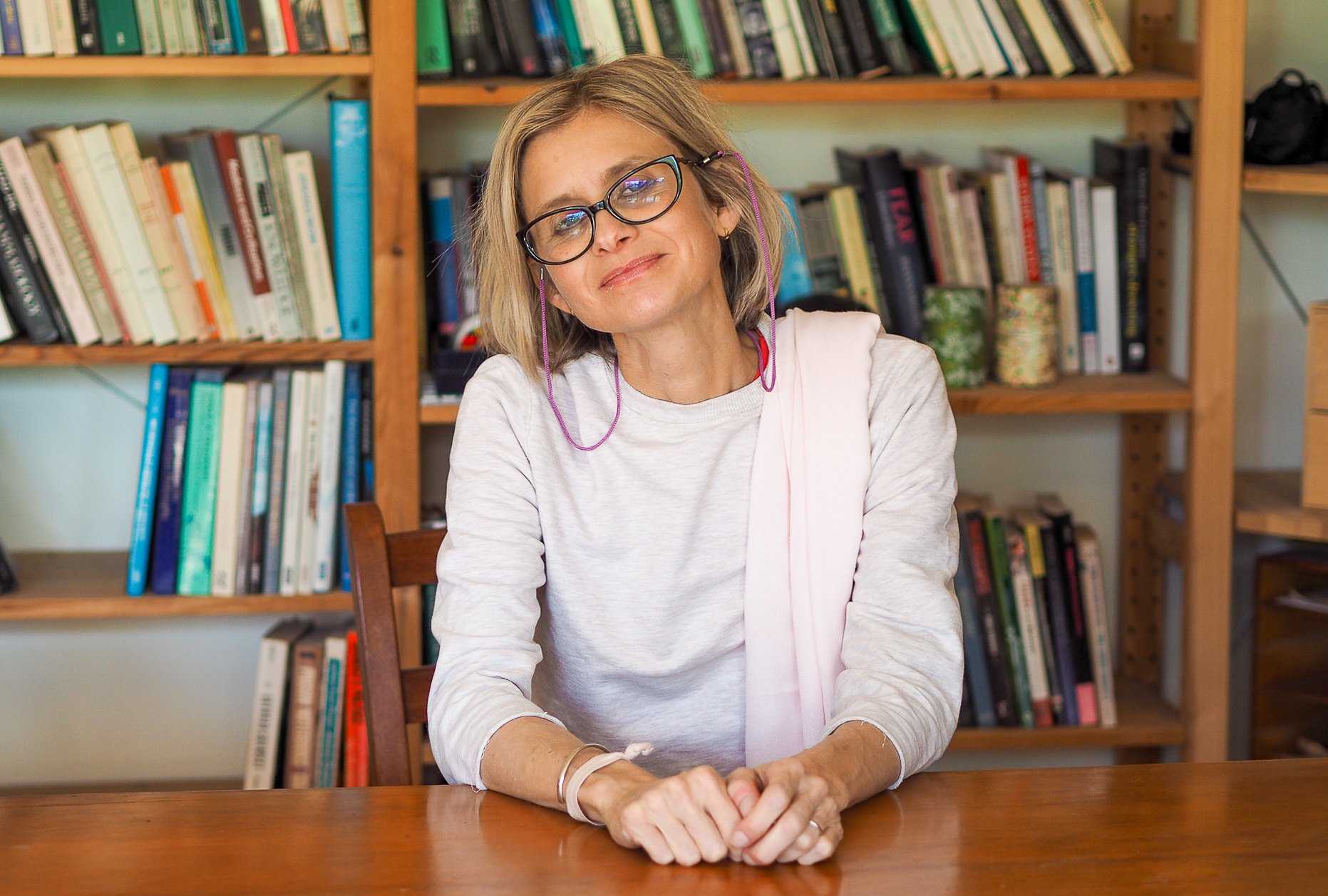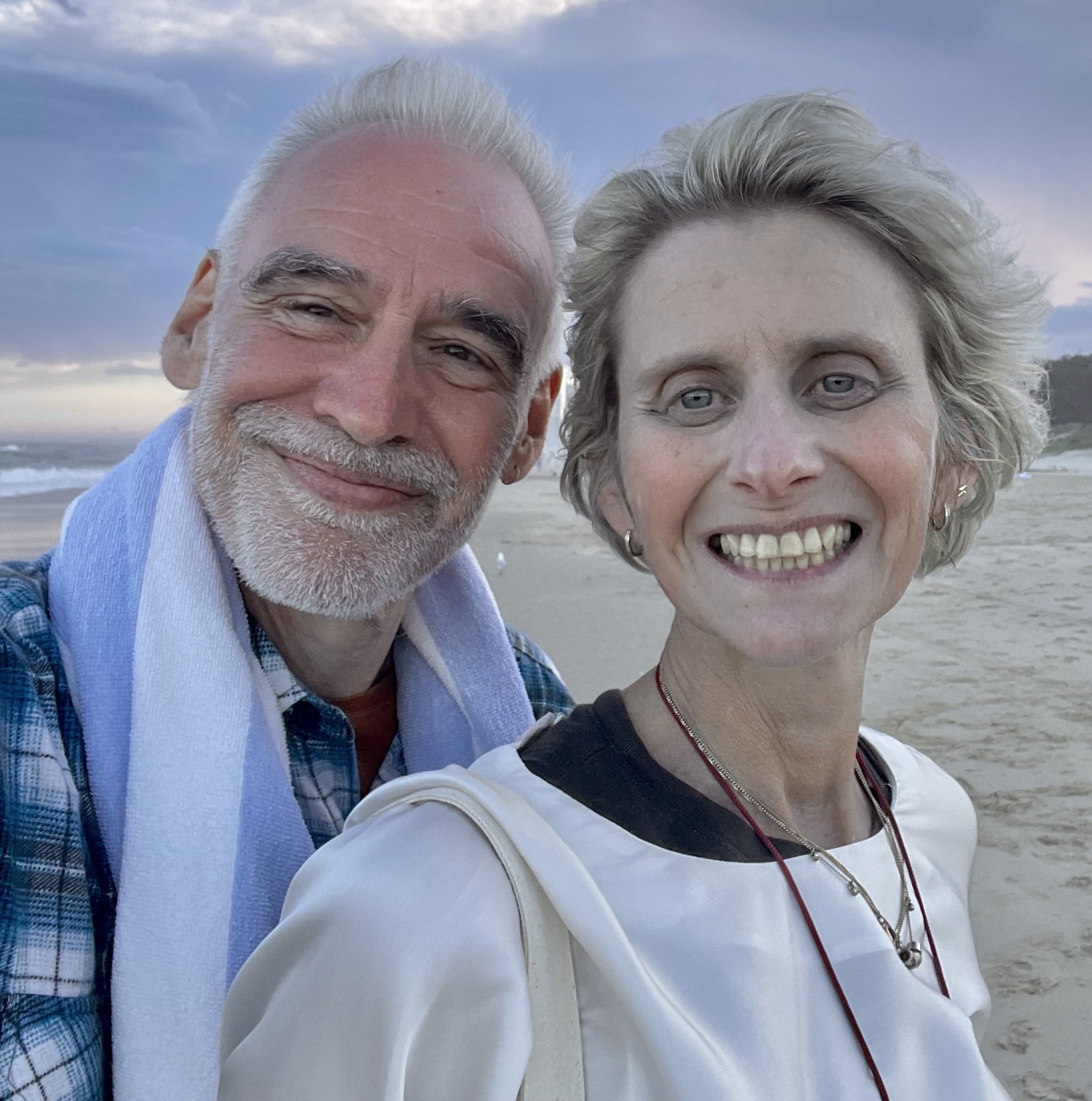Yes is a World
A Tribute to Emma Hutchison
Roland Bleiker
6 January 2025
I can write these lines only once: Emma Hutchison – my beloved wife and the most amazing person and scholar I have ever met - passed away in Brisbane on 23 November 2024.
Emma’s passing was devastating and incomprehensible, even though it did not come as a surprise. We had known for two years that time is up. Twenty-five years of dialysis-transplant-dialysis cycles had just taken too much of a toll. Since Emma lost her second transplant, five years ago, we have been on dialysis five full days a week and, in addition, faced dozens of surgeries and ever new complications. In February 2023 we were told that another transplant is impossible and that we should “drink our top shelf wine now.”
Six months ago Emma transitioned into palliative care. Two finger amputations and several other interventions extended our lives together a bit. But things became impossibly difficult. We spent far more time inside than outside of hospitals. We fought as long as we could, one day at a time. There was so much Emma still wanted to do and so many dreams we still wanted to live out together.
Emma asked me to pass on her thanks and gratitude to everyone who has so generously supported her personally and professionally over the years: family, friends, colleagues, her medical team, everyone.
We did not make the gravity of Emma’s situation public because she always wanted, above all, to be able to lead a normal life for as long as possible and despite her disability: to write, teach and contribute to the community around her; to enjoy the wonders of everyday life with family and friends.
This is why Emma taught a semester-long master’s class on Ethics and Human Rights, knowing it would be her last and sacrificing her only non-dialysis day of the week for it. This is why she directed our School’s Equity, Diversity and Inclusion portfolio until increasing hospital time made it impossible to attend meetings. This is why she kept supervising Ph.D. scholars and attended the graduation of her last completed one, even though she had to sit through a two-hour ceremony with nausea and pain. This is why she insisted on chairing a Visual Politics Program Event long after her heavy pain medication made it difficult to focus. And this is why we continued to write together on joint research projects, even during our last and traumatic weeks in the palliative care ward. I will make it my mission to complete these collaborations over the next few years.
Emma had a remarkable ability to bounce back and appreciate the wonders of everyday life. No matter how hard and painful the days were - and there were many of these - she always found reasons to smile and appreciate the small things in life. And no matter how difficult her own situation was, she always found time and energy to care for and help the people and the community around her.
Rather than holding a conventional funeral, Emma wants us to celebrate her life and the wonderful opportunities she had thanks to dialysis and two transplants: 25 extra years and the amazing chance to travel, read, write, work and love.
See here for a Photoblog that accompanies this Tribute
Writing Through Grief to Honour Emma
I wrote these rambling lines after coming home from the Wesley Hospital’s Palliative Care Ward in the early hours of 24 November, right after Emma passed away. I immediately sent the text to friends, breaking the terrible news and, at the same time, promising that I would write a longer and more carefully drafted tribute once I have recovered a bit. But it is well over month later now and I realise that normal life will be a long way off.
I am still traumatised from years of constantly navigating the borders of life and death; from having to helplessly stand by while seeing the love of my life in excruciating pain, slowly fading away right in front of my eyes.
My entire world disappeared overnight. And even though we had two years to prepare for this moment - and discussed it together ad infinitum - I was utterly unprepared.
No matter how hard I try, my brain is refusing to accept that Emma is no longer here. I see and hear and smell her wherever I go and whatever I do: smiling right next to me as I wake up; sitting beside me in the car, silently nodding and thinking in synch as we drive past the hospital; reading a book at the kitchen table while I prepare her favourite dinner; and in my head, right now as I am writing these lines, urging me not to be gloomy and to embrace life in all its infinite possibilities.
Rather than wait until I have managed to move on – which may never be the case – I decided to have a go at writing a tribute now. I know that my words will inevitably fall short, no matter how carefully I choose and arrange them. I also know that writing now is as much therapy for me as anything else. But I will do my best to focus on conveying how remarkable a person and how pathbreaking a scholar Emma was.
Theorising Emotions: Emma the Creative Scholar
Emma was a genuine scholar with an incredible passion for words and ideas. Being an academic for her was not a job but a vocation. She loved nothing more than the chance to read and write. And she fought hard for this privilege – often in the face of overwhelming obstacles.
At the time of her death Emma was an ARC DECRA Research Fellow and Associate Professor of International Relations at the University of Queensland (UQ). Her formal position and background is summarised in a moving tribute published by our School. In short: she graduated from UQ with a Bachelor of Arts in 2003 and a PhD in 2008 and was a UQ staff member for many of the subsequent years. Emma made the best out of a transplant and spent a semester as a postdoctoral fellow at the European University Institute in Florence. But for much of her professional life she was tied to hospitals in Brisbane. During this time, when unable to secure local academic employment, Emma worked for a year in the Department of Justice of the Queensland Government.
Emma described herself as an interdisciplinary international relations scholar whose research and teaching are driven by a passion for ideas and for finding new ways to understand and address key political and ethical questions. She saw the social world as a puzzle and the task of scholars to draw together the complex interplay of forces that constitute societies and their politics. Deeply concerned with questions of political responsibility and care, Emma engaged a wide range of topics, including the politics of identity and community, the legacy of conflict and trauma as well as the role of human rights, humanitarianism and aid.
Emma’s primary contribution was her pioneering conceptual and empirical work on the role of emotions in international relations. When she first started to work on emotions, in the form of developing a doctoral research proposal, she was told in no uncertain terms that this is no legitimate topic for a Ph.D. in political science.
Undeterred by naysayers Emma stubbornly persisted and wrote not only a Ph.D. thesis on emotions but also, and after several more years of work, an influential book: Affective Communities in World Politics: Collective Emotions After Trauma, published by Cambridge University Press in 2016. Her book has been widely discussed, most notably in an entire symposium devoted to it in Millennium: Journal of International Studies. Emma’s research won several prestigious awards, including the British International Studies Association’s Susan Strange Best Book Prize; the International Studies Association’s Theory Section Best Book Award; the Australian Political Studies Association’s Crisp Prize; the Paul Bourke Award from the Academy of the Social Sciences; and a UQ Foundation Research Excellence Award.
Over the years Emma cemented her contribution through numerous journal articles and book chapters on emotions, trauma, humanitarianism and the politics of images. Her Google Scholar profile documents these and her ResearchGate Page offers access to many. It is not up to me to evaluate her contributions. I am far too biased. So let me just flag two essays that stand out: one in IR on Trauma and the Politics of Emotions and one in IPS on A Global Politics of Pity. There are also a couple collaborations Emma and I were particularly proud of: our earliest one, a 2008 RIS essay on Fear No More: Emotions and World Politics; an AJPS essay on The Visual Dehumanisation of Refugees; as well as a co-edited IT Forum on Theorising Emotions in World Politics.
Emma continued to do incredible research up to the very end, when she had to work under impossibly difficult circumstances. Her last published essay, which took several years of research and cross-cultural collaboration, came out just before her death: a lead-authored Co&Co article on Decolonising Affect: Emotions and the Politics of Peace.
After Emma’s passing I received hundreds of wonderful mails and messages from around the world and from a wide range of scholars who said how much Emma’s work influenced them. From undergraduate students to senior academics, they stressed, for instance, that Affective Communities is “one of my favourite academic books;” that it “has been hugely influential on my thinking;” that it “reconnected us with the academic discipline from which we once felt estranged;” or that “there is no better piece of work that encapsulates with so much clarity how and why emotions matter in global politics.” As a prominent professor put it: “Emma was an absolutely fantastic path-breaking scholar. Her work, not least her book, has transformed the way that IR scholars, and others, can think about emotions. Those words will stand the test of time when so much else will have been forgotten.”
A particularly fun highlight of Emma’s career was when one Russel Crowe re-tweeted Emma’s book to his almost three million followers, right after a BBQ-selfie with his mate Hugh Jackman 😊. Maybe Russel and Hugh, over grilled sausages, noticed Emma’s uncanny ability to communicate complex ideas in a language that is accessible to a wide audience. When teaching, for instance, Emma carefully prepared and mapped out each lecture, tailoring it exactly to the specific class and their needs. Here you can find videos of an undergraduate lecture on New Directions in International Relations Theory; an Interview about her Book; or a workshop keynote on Seeing and Feeling in the History of Humanitarianism.
You might particularly enjoy viewing the public lecture Emma gave when receiving the Paul Bourke Award from the Australian Academy of the Social Sciences. She spent weeks preparing and fine-tuning and practicing – all to make sure she had just the right pitch for the right audience.
What made Emma so successful as a scholar and writer?
Emma was an academic and wrote not because it was her job or because she was hoping to advance her career. She wrote because she was passionate about the world of ideas and the process of reading and writing. She was endlessly curious: an idea-sponge, absorbing everything around her. And she did what she could to expand her knowledge base, including by learning Mandarin Chinese and Italian. Much to my dismay she even picked up enough Swiss German to follow what I thought were ‘private’ daily phone check-ins with my mother in Zürich.
Emma read furiously and compulsively. She read fiction. Lots of fiction. She devoured novels like there was no tomorrow. Highbrow. Lowbrow. She was at home in the world of words. This is why, when conducting research on a political topic, she read far wider than most of us do. She looked in our own discipline and far beyond: in psychology, anthropology, history, philosophy, business, education, everywhere. She read conventional work and she read ‘funky stuff’ and she read an incredible amount before she felt confident to say anything about a topic. You will find traces of these cross-disciplinary adventures in the bibliographies of her publications.
Part of Emma’s success was hard work and stubborn determination. Before her health started to deteriorate, she would be up at 6am every day, at her desk, writing. And she read and wrote wherever we went, from doctor’s waiting rooms to the thousands of hours she was tied to a dialysis chair. She always had a book with her and a bunch of printed journal articles. And she always had a pencil and a ruler and a notebook, obsessively underling and scribbling down quotes and thoughts and ideas and plans.
Part of Emma’s success was that she loved reading and writing. The perfect day for her was a quiet day at home, with the opportunity to read and write undisturbed for hours; to then sit at our table outside and edit and discuss ideas together; and then go back and read and write and edit more.
There was no surprise, then, when many colleagues and friends wrote after Emma’s passing and stressed how much they appreciated her voice. Her love for writing showed in how she communicated. As one colleague put it: “I have always admired Emma’s ability to find just the right words, whether it was in one of her kind and encouraging e-mails, or her wonderful scholarship.”
This is also why co-authoring with Emma has been my biggest scholarly pleasure and privilege. It was to get lost in a wonderful world of words: to read and think and ruminate together, to draft and re-draft each other’s sentences, again and again, until both of us were happy with the text in front of us.
Emma’s talents, including her capacity to think and write creatively and empathetically, might also have been linked to her neurodiversity. She had an uncanny ability to synthesise disparate experiences and literatures, carving out her own unique path through them.
I loved how Emma’s mind worked. It was unique, constantly sparkling with ideas and new ways of looking at and sensing the world around us. She had a remarkable emotional intelligence and corresponding capacity for empathy.
Emma managed to get the best out of these unique traits only once she was diagnosed with Aspergers, which was one of the most positive turning points in our lives. Working with a wonderful psychologist, and devouring every single book on autism we could find, helped us understand a lot of things and allowed Emma to flourish while navigating the inevitable and at times gargantuan obstacles of living as a neurodivergent person in a neurotypical world.
The Body in Pain: Emma’s Path Through Illness
Emma’s scholarly contributions are outstanding by any standard, but they appear truly phenomenal in the context of the enormous health challenges she faced for her entire adult life. She never had the chance of a carefree existence, having had to establish her entire personal and professional life while navigating pain and suffering.
It is impossible to speak about Emma and her contribution without speaking about these health challenges. They shaped who she was, including her ability to appreciate the wonders of everyday life; her scholarly motivation to understand the politics of trauma and emotion; as well as her capacity for empathy and her commitment to inclusion and fairness in everything she did.
Let me start with Emma’s own words and with a health-summary she wrote for a pain specialist she was seeing for the first time two years ago:
I am a dialysis patient and twice kidney transplant recipient. This is my third time on dialysis.
I was first diagnosed with renal failure as a teenager in the 1990s and started dialysis during my undergraduate studies.
I received my first transplant in January 2001. This transplant was relatively successful, functioning well for several years, but began failing in 2009, at the starting point of my professional career.
My transplant and health then further deteriorated until, in early 2014 I was put back on dialysis. From then on I attended hospital four full days a week for treatment. While on dialysis I required a dozen surgeries, including a nephrectomy of my kidney transplant, multiple procedures for my haemodialysis access and fistula, and, following a diagnosis of thyroid cancer, a complete thyroidectomy and lymph node removal.
I then had my second transplant in July 2017, which was complicated due to my high antibody count.
After three difficult years the transplant failed as a result of steroid resistant cellular rejection. Since recommencing dialysis – now five full days a week - my health has been very fragile. Despite being active, I had two different occurrences of pulmonary embolism, with one of them becoming chronic. I also had a series of hematoma, one of them requiring emergency surgery and causing the complete paralysis of my left arm.
I have had countless procedures and surgeries and would generally call my pain tolerance as excellent. But the pain associated with nerve damage in my arm has been unbearable.
This is an abbreviated and sanitised description of Emma’s situation two years ago, just when things suddenly started to get dramatically worse. Numerous even more serious problems emerged, including calciphylaxis, leading to more and more surgeries. Pain management became impossibly difficult and required the amputation of Emma’s right index and middle fingers.
I would like to explain what it meant for Emma to live and work under these conditions for the past 25 years. I am doing so in part because Emma often lamented that people did not see and understand her suffering. She was exceptionally meticulous about her appearance, looking great even on her worst days. She dressed in ways that were both elegant and fun. The compliments she often received pleased her – because they made her feel alive – but also frustrated her – because she wanted people to see and feel her pain. This difficulty of communicating the nature of pain is, as we knew, a well-known dilemma, discussed in Elaine Scarry’s book The Body in Pain.
Emma’s own attempt to write about her personal trauma was her blog called Dialysis Days. In ten entries she describes different aspects of living with end-stage renal disease.
The blog reveals both insights about renal failure and Emma’s remarkable ability to find just the right words to somehow express the seemingly inexpressible. I encourage you to read it, starting with the very first entry, dated 1 July 2015 and called “My Prozac Nation.”
The blog stops four years ago, after Emma lost her second transplant. She wrote several new entries but never published them, in part because she felt they were too honest and too dark. She was vulnerable and did not want to become known as the dying person, preferring, instead, to live as normal a life for as long as possible. This is why she asked me to complete and publish these draft blogs after her passing, including one called “Finger by Finger,” together with some of the photos I took of her pain and suffering over the years. I will do this at some point, when I have enough distance to trust myself to make the right choices about what to include and exclude.
Two aspects are central to understand Emma’s health: transplants and dialysis.
First: Living with a transplant gave Emma a second chance at life and the freedom she craved.
Emma made the best of the opportunities that opened up, not only by excelling during her undergraduate, honours and Ph.D. studies, but also by venturing out into the world. Having been a competitive swimmer before she got ill, Emma attended several World Transplant Games, including in Thailand, France and Canada, where she won several gold medals. As far as I can tell she still holds the World Transplant Games Record in 50m and 100m Breaststroke. She also travelled several times for work.
Just when offered a six-months postdoctoral fellowship at the European University Institute in Florence, in 2009, Emma was told that her transplant had started to fail. We took the risk and still moved to Italy, knowing fully well that things could go wrong quickly, but also that this might be the last time she could travel abroad in her life. As it turned out, it was indeed the last time and she did make the absolute best out of her stay in Florence, researching her book, absorbing everyday life, and loving every minute of it, despite crippling migraines associated with her failing transplant.
A transplant also came with challenges. There were extensive hospital stays at the beginning, followed by months of daily monitoring and doctor visits. Even once settled, a complex regime of medication was required to prevent rejection of the transplant. Long-term side-effects were inevitable, including osteoporosis and the risks associated with being immunosuppressed which, in Emma’s case, led to several infections and hospitalisations. Managing her medication was a major job, involving over two dozen pills a day and regularly testing and adjusting. All this became even more challenging when abroad, especially for longer periods. For our stay in Italy, for instance, we travelled with an entire suitcase of pills and then spent countless hours navigating the Italian health care system during our stay.
Second: while transplants gave Emma freedom, dialysis tied her to a life in and around hospitals.
During more than a decade on dialysis over the past 25 years, Emma required four to five treatments a week, each involving around four hours on the dialysis machine, plus at least an hour to get on and off. If one adds inevitable delays, plus the trip to and from hospital, this pretty much takes up the entire day.
The Dialysis Ward at the Wesley Hospital in Brisbane became our second home: a place where we spent thousands of hours together and conducted much of our work, including, for Emma, writing a big chunk of her book on Affective Communities in World Politics.
The daily reality of dialysis is gruelling and relentless and difficult to describe. Here Emma writing in one of the many administrative forms required at work:
Kidney failure not only requires five full days a week in hospital for dialysis treatment and multiple surgeries but is also associated with debilitating daily challenges. These include severe fluid and food restrictions, regular nausea/vomiting, anaemia and severe lethargy. These daily effects have been constant and long-term and fundamentally constrained my career and research capacities.
Access to hemodialysis can be done either through a central line or a fistula, which surgically connects an artery and a vein and requires the use of two needles to connect the dialysis machine. Emma had over a dozen lines, each requiring surgery to install, and three fistulas, each with difficulties that involved surgical interventions and eventual ligation.
Although we had wonderful nurses looking after us, a dialysis ward is not relaxing. It is an open space that accommodates over a dozen dialysis stations, each occupied by patients who tend to be unwell or/and elderly. We were often the only ones in the ward still working and, indeed, trying to work right there and then. Doing so was not easy. There were neon-lights everywhere and a constant stream of intrusive noises, from machines aggressively beeping to TVs blaring anything from Sky News to football matches and quiz shows and all at the same time. There were regular emergencies, including, on several occasions, patients dying in adjacent chairs. And there was the actual dialysis process, which is intrusive and involves needling a fistula and, for Emma, often causing physical side-effects, such as intense itching and severe cramps, all while tied to a bed for hours.
We usually came home from dialysis around 8pm, utterly exhausted but at the same time so wound up that we could not get to sleep until the early hours of the next day - just to then get up soon after and start everything all over again. And again. And again.
There is no break from dialysis, no escape, no holiday. No chance to be away from hospital for more than a day. Week after week. Month after month. Year after year.
The only days off we had were Wednesdays and Sundays. Wednesdays were usually taken up with work meetings and more medical appointments. Sundays were the only days we had at home, which we often used to write and to catch up with overdue work and household chores. On rare occasions we managed brief trips to some of our favourite places, such as the nearby Mt Coot-tha Botanic Garden. But, in essence, the inevitable result of dialysis was an isolating life, with frustratingly little time for family and friends.
We often fantasised what a normal life would look like: an existence without hospital; to go to the office in the morning, work away peacefully and then come home and cook a nice dinner and quietly read a book; to be able to do fun things, like meet friends for brunch or attend a concert, or go away on weekends. But over the years we lost the ability to even imagine what such a life would be like. Our hectic daily existence – rushing in and out of hospital, facing one crisis after another – became our normal. It was only after Emma’s passing, freed from our hospital routine, that I fully realised how impossibly hard our lives had been for so many years.
It was heartbreaking to see how many opportunities Emma constantly missed out on because she was tied to a dialysis regime: job offers, opportunities for collaborations and, mostly, time to read and write.
Throughout her struggles Emma received wonderful support by many friends and colleagues. At the same time we inevitably noticed that universities are not set up to deal with staff members who face chronic disabilities. Policies for medical leave, for instance, are designed for able-bodied people. These policies assume that illness is temporary and that a person will recover and eventually emerge fully re-integrated into work. If this is not the case, a staff member soon runs out of their allocated medical leave. And so did Emma.
My health constraints have affected my career and research opportunities in many interrelated ways. Living with kidney failure and on dialysis has made full-time work impossible. For all of my career I have, at best, worked in part-time and contract positions, mostly funded by external research grants and fellowships. Over the last few years I also needed to take several periods of unpaid sick leave, such as for my thyroid cancer surgery and treatment.
The salary Emma received from her part-time university job was often not even enough to cover her medical expenses. The only reason why she was able to pursue an academic career was because we worked as a team and combined our resources. Otherwise she would never have been able to teach and mentor the students who loved her so much or write the publications for which she became so well known. This is neither fair nor conducive to fostering the type of diversity that can bring the best out of people and help societies thrive.
Yes is a World: Emma and the Art of Living, Loving and Caring
I have elaborated in detail on Emma’s health challenges because her story is a story of resilience. Seeing her thrive against all odds has been the most inspiring experience of my life.
Despite all the pain she had to endure, Emma was never bitter or cynical. She held no grudges.
Emma’s positivity and thirst for life was infectious.
During the last year of her life, Emma kept a notebook called The Book of Dying Lightly. In it she wrote down a wide range of thoughts: her fears and hopes; her favourite five books; the most important things she still wanted to do in the little time she had left, on her own, with me and with family and friends and colleagues. She noted down details on the writing projects she was hoping to finish and those she wanted me to complete in the years to come. There were photos of the type of urn she had in mind and one page reminded me not to forget, with Gaston Bachelard, that “the places we inhabit ultimately inhabit us.”
A particularly prominent place in Emma’s Book of Dying Lightly was reserved for her favourite poem: Love is a Place by E.E. Cummings. It was scribbled down in unsteady writing, marked by two missing fingers, but the message remained loud and clear:
Emma fully embraced these lines day in day out: she loved her life and the people in it. She lived in a “yes” world, taking risks, venturing into the unknown, smiling even on days when there was so much pain we could hardly breathe.
One of the many traits I loved about Emma was her ability see the world anew, as if it were for the very first time. She enacted Shunryu Suzuki’s Zen Mind, Beginner’s Mind without the process of conscious meditation. Emma could wonder and get joy out of mundane things that nobody else even noticed.
On our very last outing into the free world, which was a short trip down to the local gas station before checking into the palliative care ward for the third and last stay, Emma marvelled at - and we had a lot of fun with - the two-dollar-self-serve-iced-coffee-machine, forgetting, just for a moment, the impossible future that was right ahead of us.
And there was Emma’s love for clothes - many of them made by her talented mother Roz - and for her shoes, which she carefully decorated herself to match her mood on the day she wore them. They were full of fun and life and often attracted comments from friends and strangers alike. The jewel in Emma’s collection were her pair of ‘lucky shoes,’ which she wore whenever she either felt lucky or badly needed luck: from our wedding to important surgeries to her Paul Bourke Public Lecture. I desperately wanted to hang on to her lucky shoes but, in the end, reluctantly sent them along with Emma on her last journey.
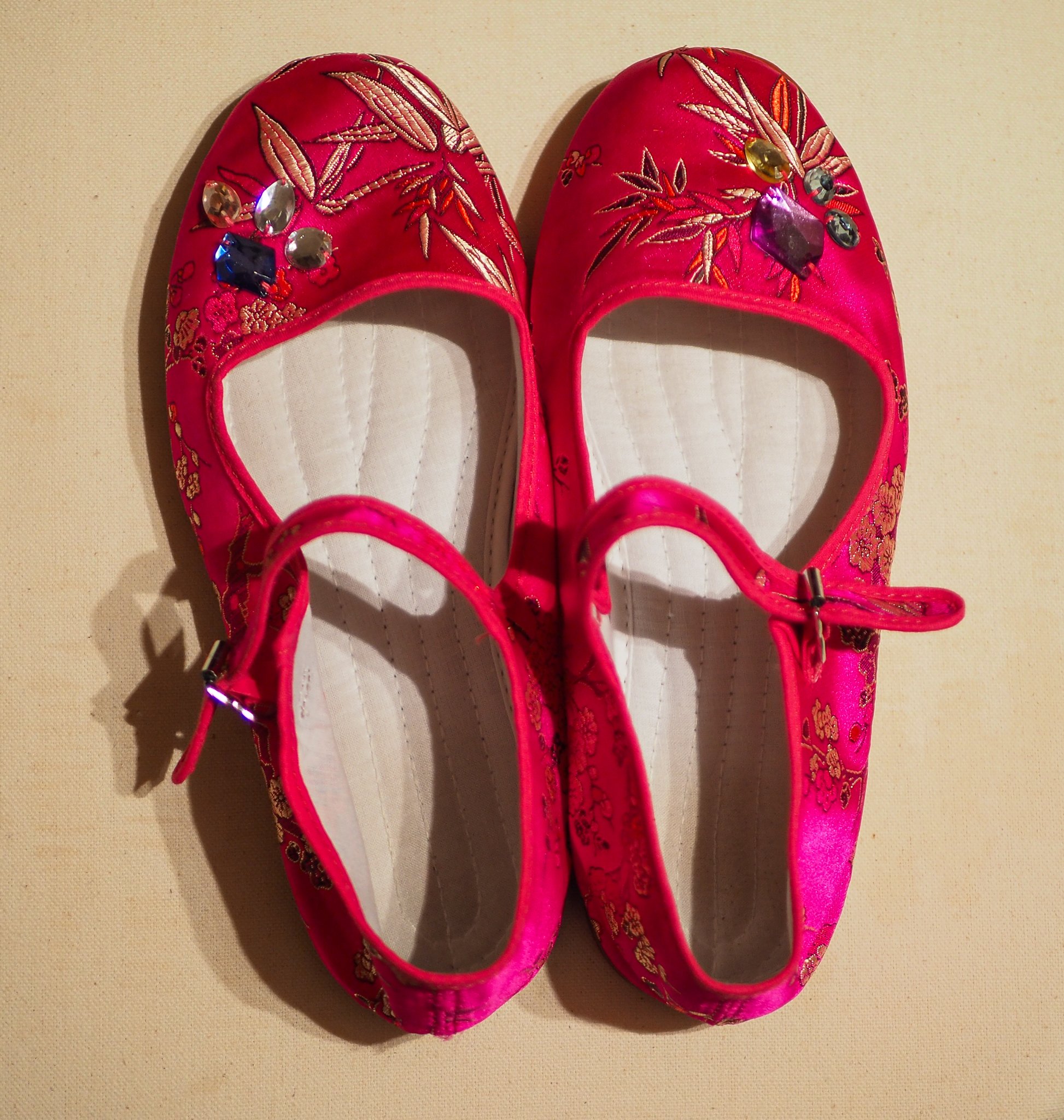
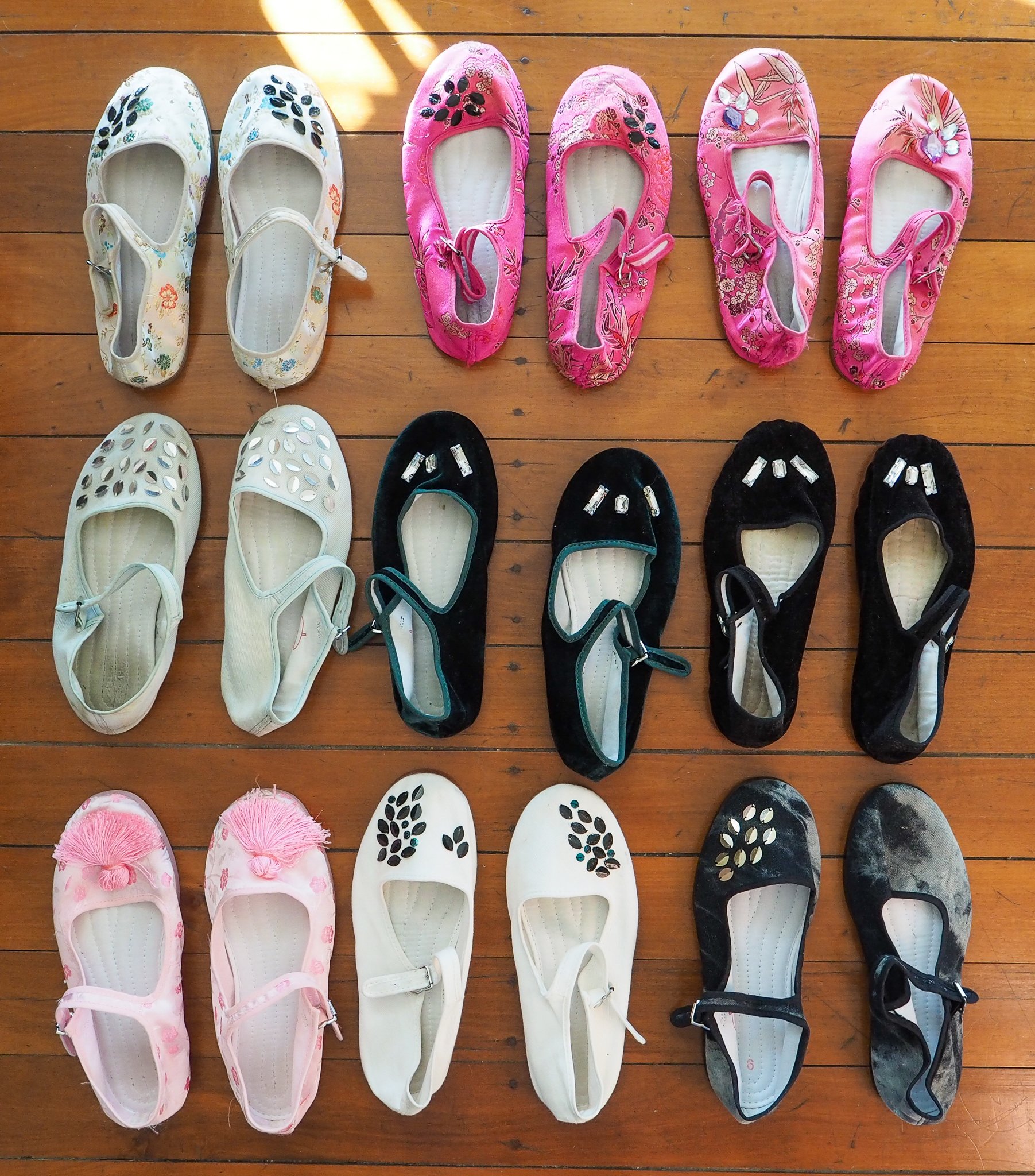


A big part of Emma was that her love for life was not just about her but also extended to others and manifested itself in a deep care for the people and the community around her.
Living in a vulnerable body, Emma was acutely aware of how power worked, overtly as well as inaudibly, privileging some people and disadvantaging others. This is why questions of fairness and inclusion shaped whatever Emma did. She always noticed and looked out for those at the margins of dominant social interactions. When she taught, for instance, she always went to great lengths to set up her classroom so that everyone felt comfortable and respected and able to contribute. She wanted students to have a learning experience that was both safe and inclusive but also stimulating and challenging.
Emma was generous to a fault, endlessly caring for family, friends and the people she worked with. Far too often, and much to my dismay, she put helping others before her own interests. Even when she got sick and barely had time for her own work, she spent hours commenting on drafts of papers and grant applications by colleagues. She used the little non-hospital time she had left to meet with her Ph.D. students or to chair our School’s Equity, Diversity and Inclusion Committee, which she did with great passion until it became physically impossible.
When I told Emma, as I often did, that she was the most remarkable scholar and the most amazing person in the world, she always responded by saying that I was biased and blinded by my love for her. Not so, as it turned out.
In the weeks after Emma’ passing I have received hundreds of wonderful mails. There were kind wishes and appreciations of Emma and her contribution from senior people, including the Vice-Chancellor, the Dean and the presidents of the Academy of the Social Sciences and the British International Studies Association.
Particularly revealing were the many mails I received from friends and students and fellow academics. They paint a picture of Emma as an influential scholar and, just as much, as a person who treated everyone with respect, not just those who mattered for her career.
The words that most often pop up, again and again, in hundreds of mails, were “kind,” “insightful” and “generous.” One colleague wrote that “Emma touched everyone she met and made you feel like you wanted to be a better version of yourself.” Another colleague simply but accurately said: “She was incredibly smart. She was incredibly kind.”
Here are a couple of passages from these mails. They would have cheered Emma up enormously, especially during the last couple of years, which were marked by constant pain and suffering, as well as disappointing rejections by journals. I hope you can somehow still read these words, my love:
Many in my cohorts would talk to me about Emma - in Honours and in Masters. The conversation was always something along the lines of “how does she understand what I’m trying to say when I can’t even say it myself?”. Emma’s ability to understand what others were *trying* to say, or what they were thinking, and to help them conceive it and say it, was only one of the many reasons students loved her. Speaking to Emma felt like arriving with a ball of tangled yarn and leaving with a sweater. But it was always your own sweater, exactly how you wanted it to look. (former student)
I had not anticipated the indifference of many established scholars towards their most precarious colleagues. During the brief period when Emma and I exchanged emails, she was the exact opposite, and all her messages felt friendly, supportive, and warm. She was profoundly human and generous to someone she had never met and likely never would. Emma, whose work I deeply valued, not only reassured me of the worth of my own work, she also reassured me of the worth of academia as a whole by embodying a model of what scholars could be and should be. (scholar Emma corresponded with)
Emma's words and thinking became a companion beyond their academic premise. They meant so much to me. When I often found myself at the margins of academia, exhausted through navigating north/south hierarchies and tensions, Emma's book made me bear my being a stranger, giving me a sense of belonging and attachment which I could not find elsewhere in those years. It became a refuge and meant and felt much more personal and intimate to me than just an amazing academic encounter. (scholar who read but never met Emma)
I wanted to pass on to you how inspiring I personally found Emma’s work: incredibly interdisciplinary, creative, and challenging. It always made me want to be a better scholar and writer. What struck me most though, was the curiosity and generosity of spirit that undergirded all her thinking. With the health struggles Emma went through, one would not blame her for becoming bitter or angry. But it seemed the opposite in her scholarly work: instead of hard-nosed cynicism or bitterness, there was a radical sense of empathy and openness. (Australian colleague)
Despite her declining health, Emma helped steer me through my project since the start. Every once in a while, she wrote encouragingly long, carefully crafted personal emails - with so many smileys - to help me make sense of what I was doing, where I was, and if I was not overwhelmed with it all. Emma was a true emotions scholar. She understood and appreciated people. (current Ph.D. scholar)
A Big Thank You
I agonised with how best to acknowledge and thank you: our family and relatives and friends and colleagues and our medical team; the many people who have so kindly helped us over the years and written to me since Emma’s passing. But I soon realised that I am facing the impossible.
There are so many of you to feature and thank. Emma’s medical support team, for instance, was comprised of many dozens of wonderful people: her GP, her nephrologist and her various other kidney and transplant experts, her psychologist and her numerous surgeons and anaesthetists and physiotherapists and specialists and the many amazing nurses at the dialysis ward and the palliative care ward and the hospital’s orderlies and cleaning and food staff and many more.
We are grateful to all of you and everyone else who supported us. But the more I started to name you the more I feared that I will inevitably leave many others out. Given that this is a tribute, and not a biography, I ended up focusing on Emma and on photos of her, keeping everyone else as anonymised as possible, including those of you I quoted with permission. Here some photos that stand for you all. I hope you are ok with this solution, my friends. Both Emma and I are very grateful for your support.
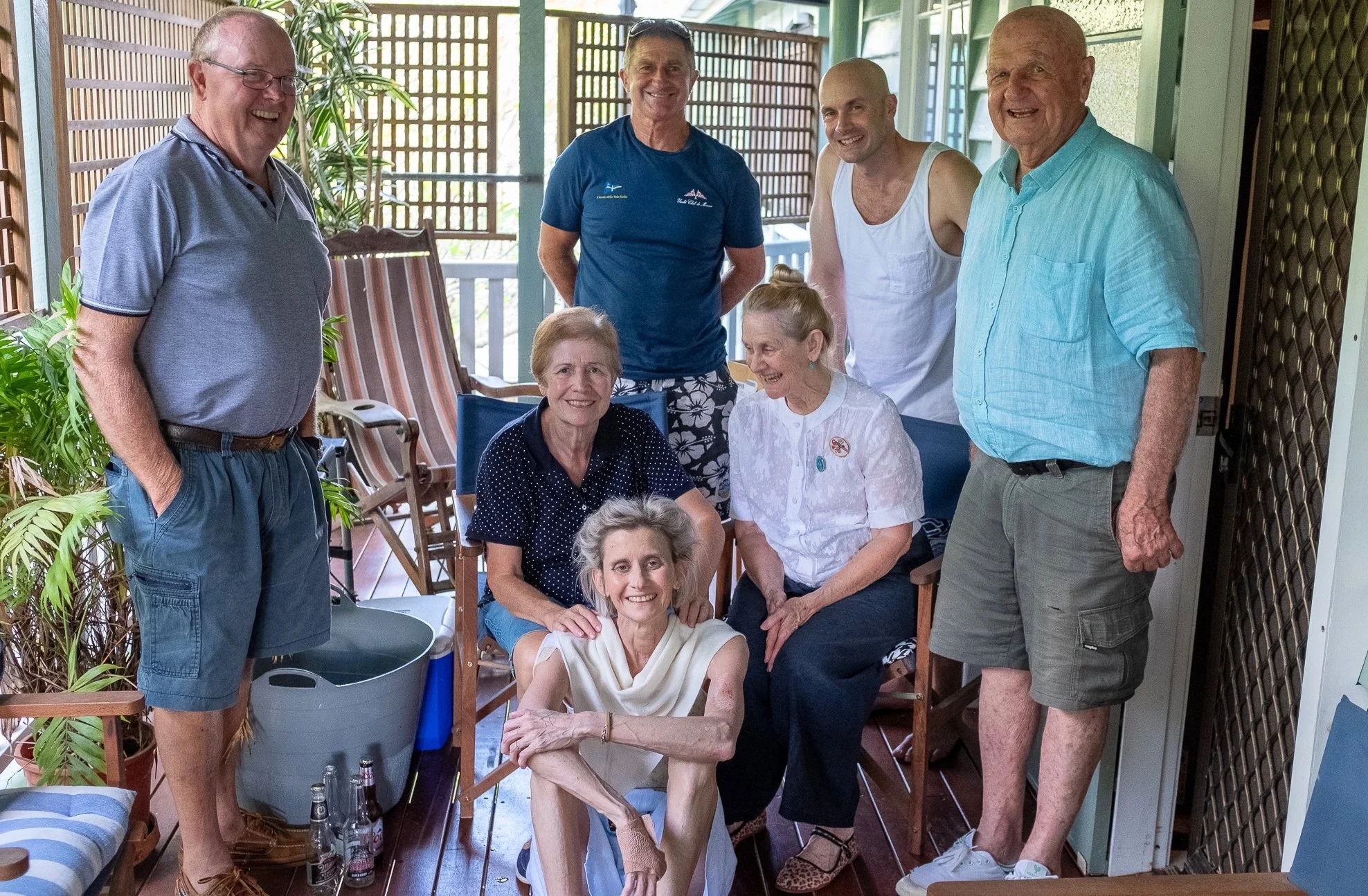
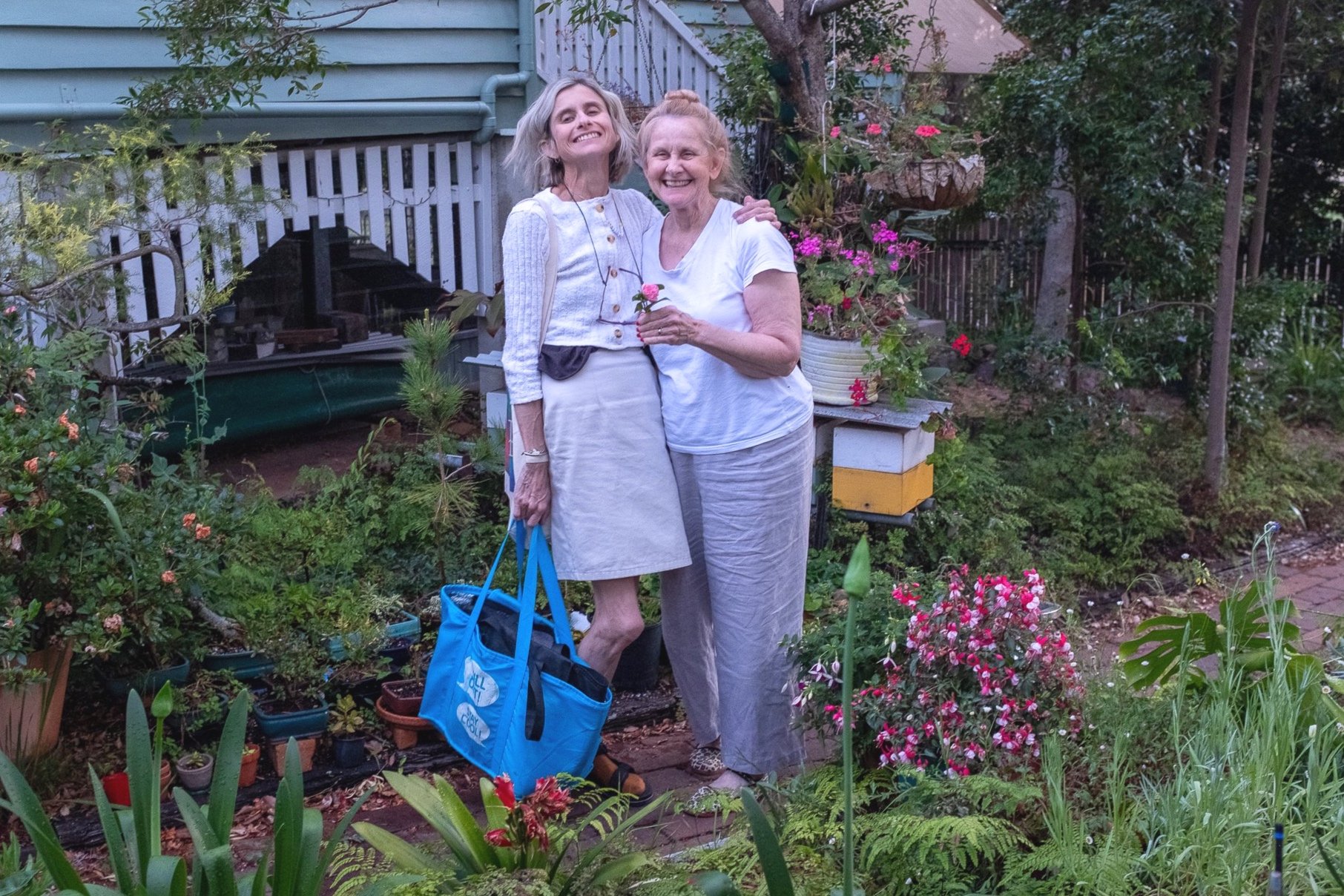
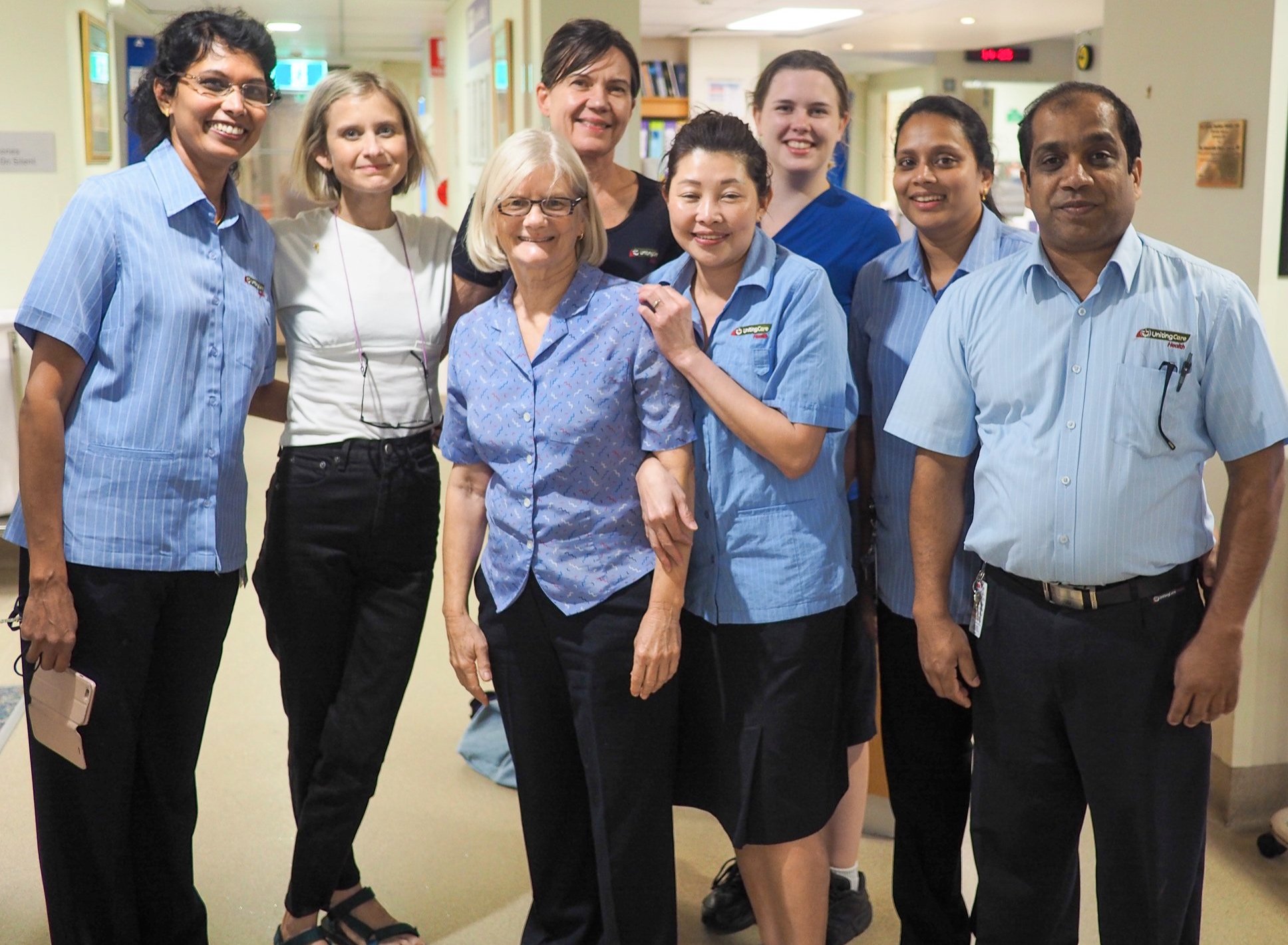
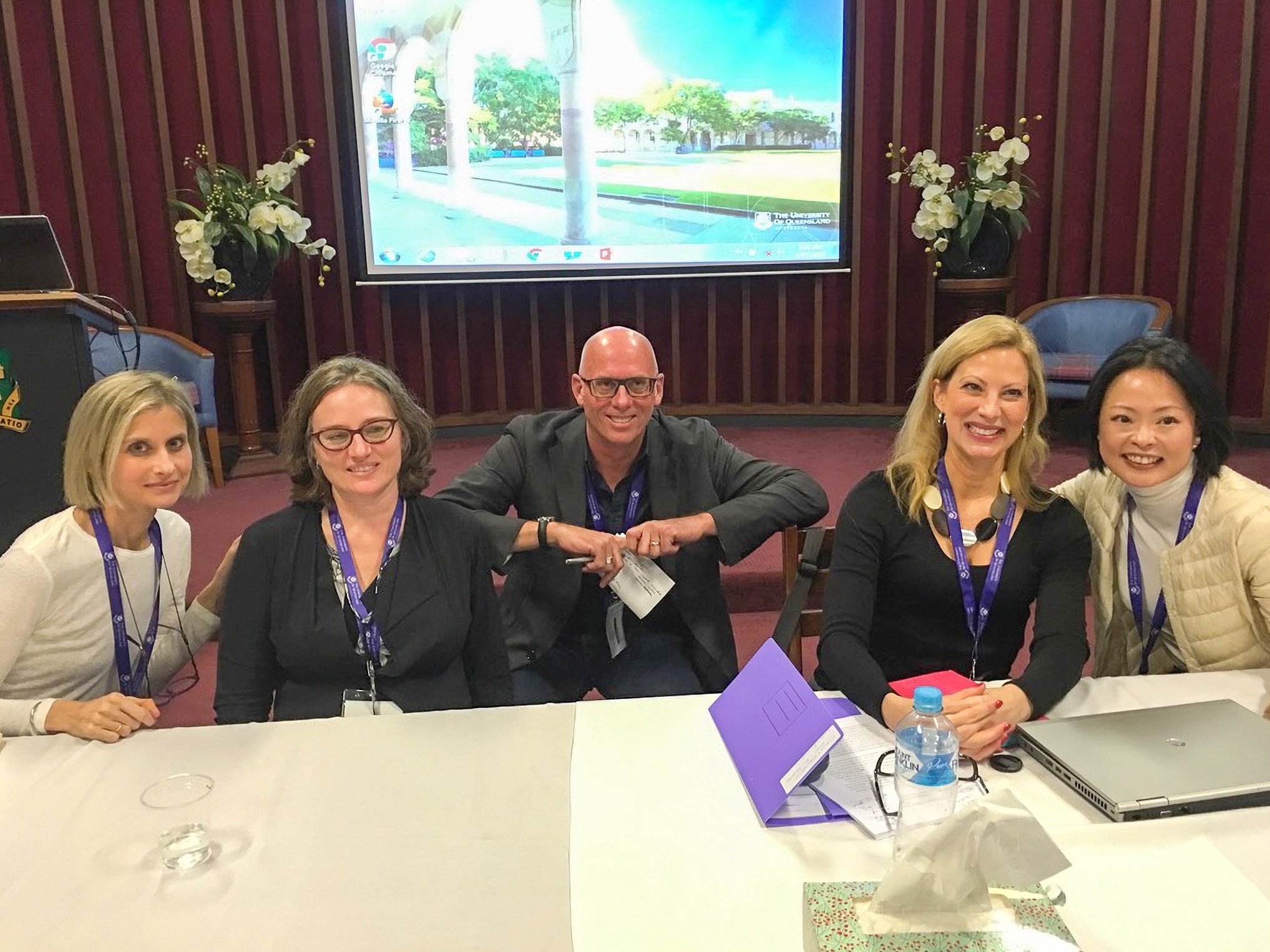
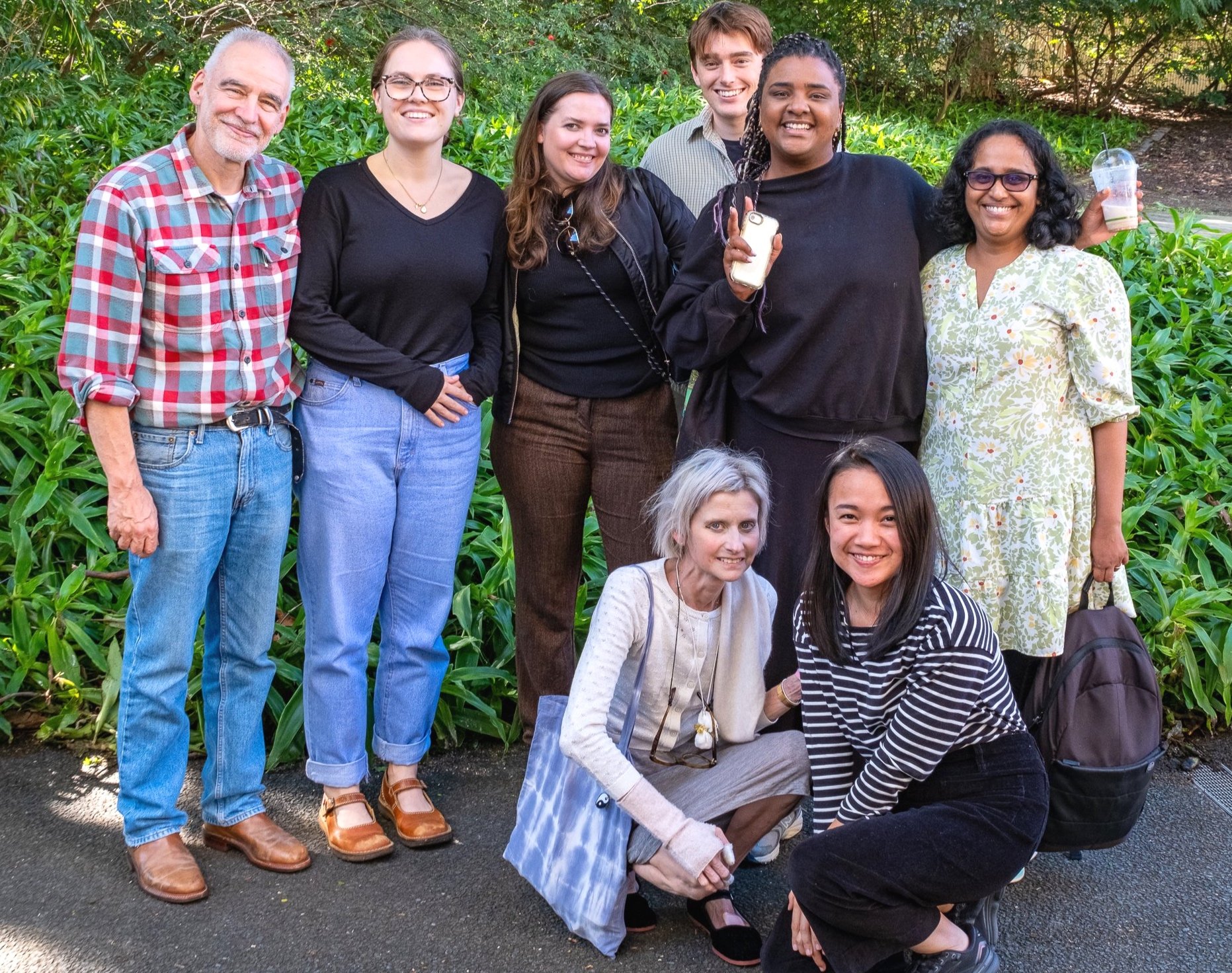
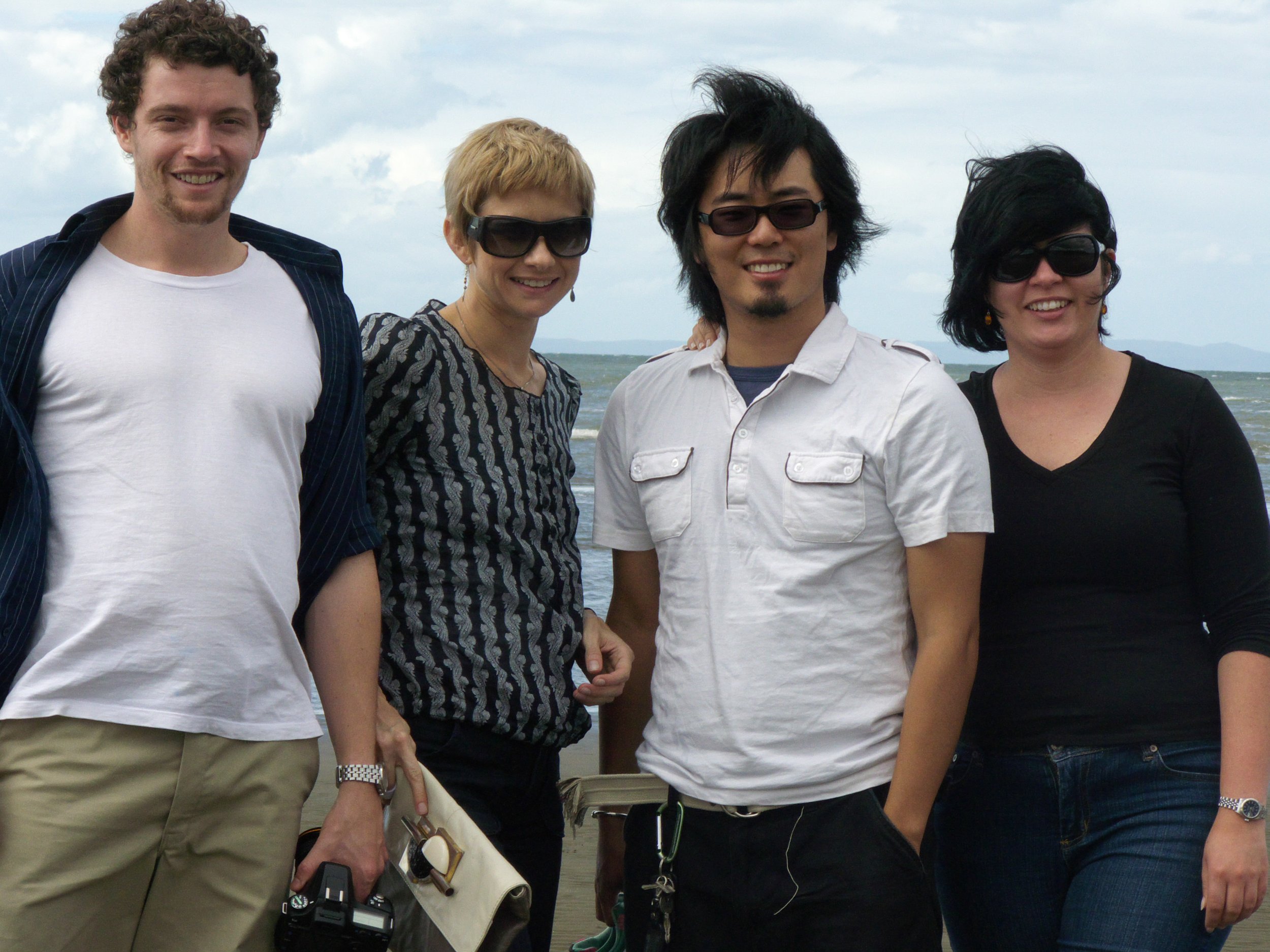
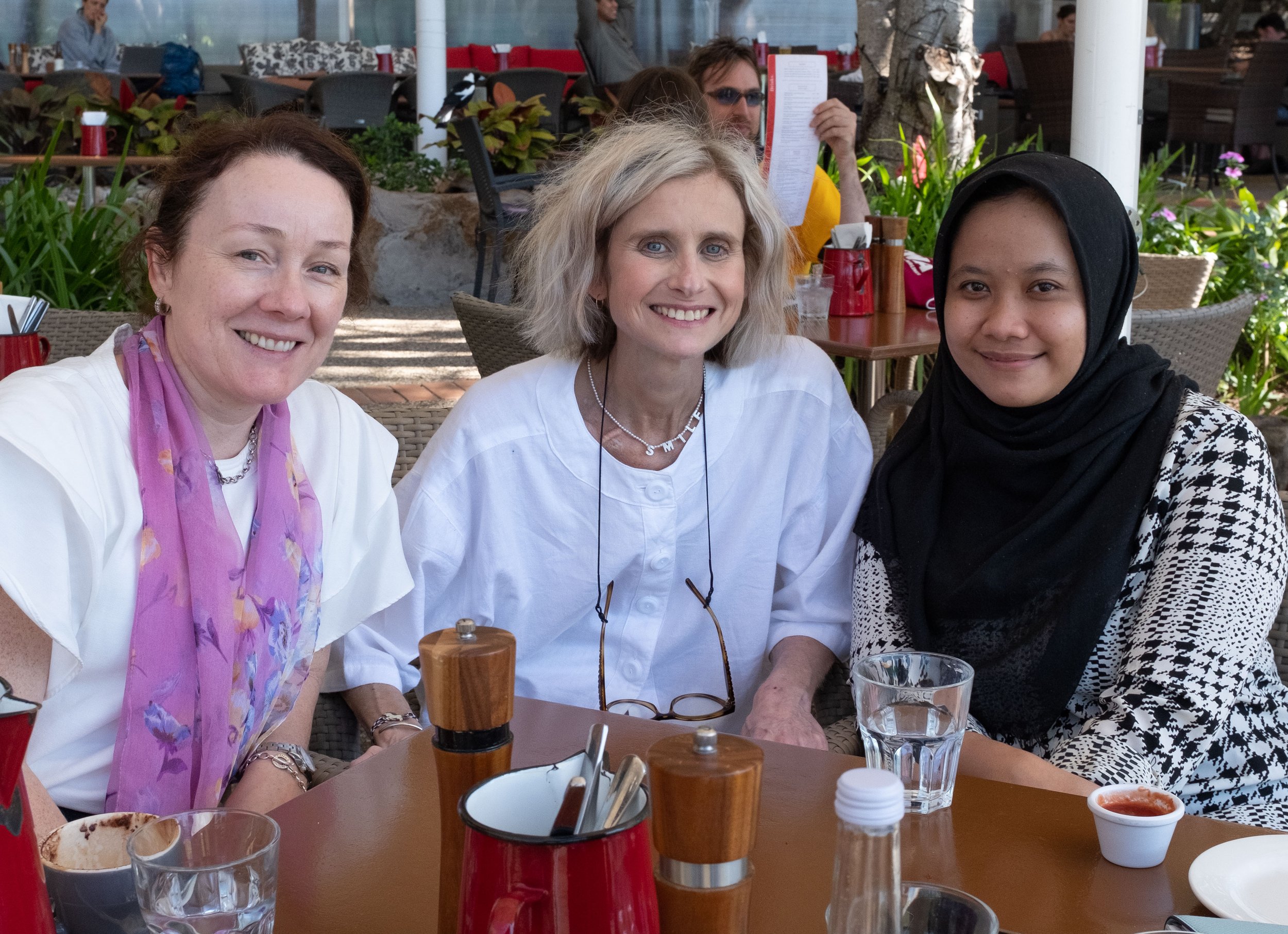
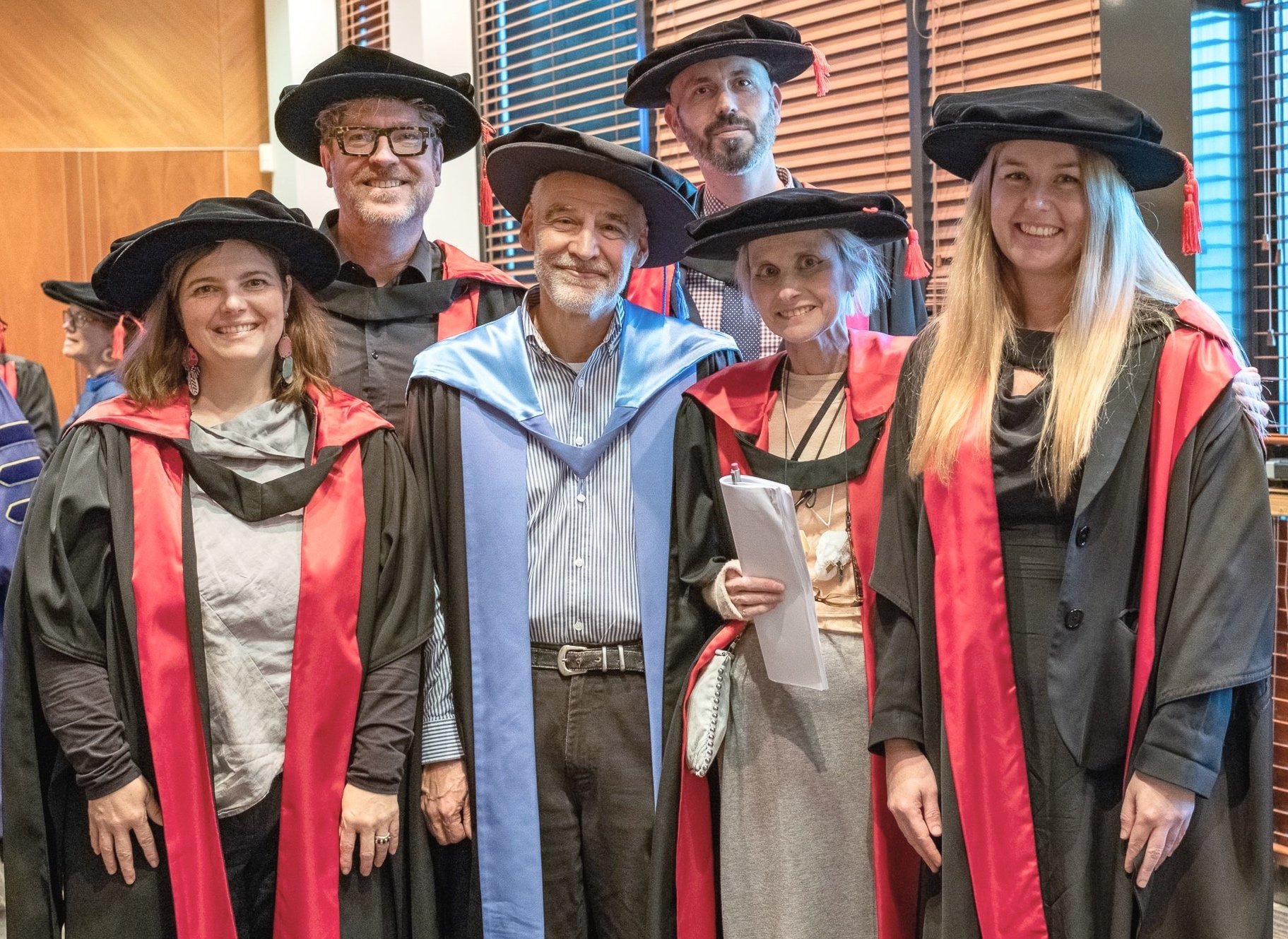

Remembering and Honouring Emma
The more I wrote on this tribute to Emma the more I realised how much it remains a form of therapy for myself, no matter how much I edit and trim the text and focus on Emma. I hope you don’t mind, nor that I have more in mind for the years to come:
Complete several research projects that Emma – and the two of us together – were unable to advance because of the increasing time we spent in hospital over the past decade. This includes work on several half-finished essays and a book on emotions, an upcoming conference presentation that hopefully leads to a co-authored paper, as well as an ARC-funded collaboration on Visualising Humanitarianism, which we co-established and co-lead and which involves wonderful colleagues.
Find ways to honour Emma and sponsor activities and causes she valued. I have in mind an annual lecture by a prominent scholar, combined with a workshop for Ph.D. and early career scholars; and support for creative interdisciplinary work in the realm of international politics and in the spirit of diversity, equity and inclusion.
The most immediate task, though, is to remember that Emma asked me to live on and embrace life with the same “yes” spirit she embodied and inspired us with. As I am trying to do so, slipping and sliding more than forging ahead, I remind myself of the Alfred Tennyson lines a colleague sent me shortly after Emma’s passing: “Tis better to have loved and lost than never to have loved at all.”
He was my hands when eventually I had none. He was my mouth when I could speak to no one. In return, I carried the heaviness of his heart when he could no longer look on.
Some might say this isn’t my story. But we were not two, but two halves of one.
This is my story. His story. Our story.
